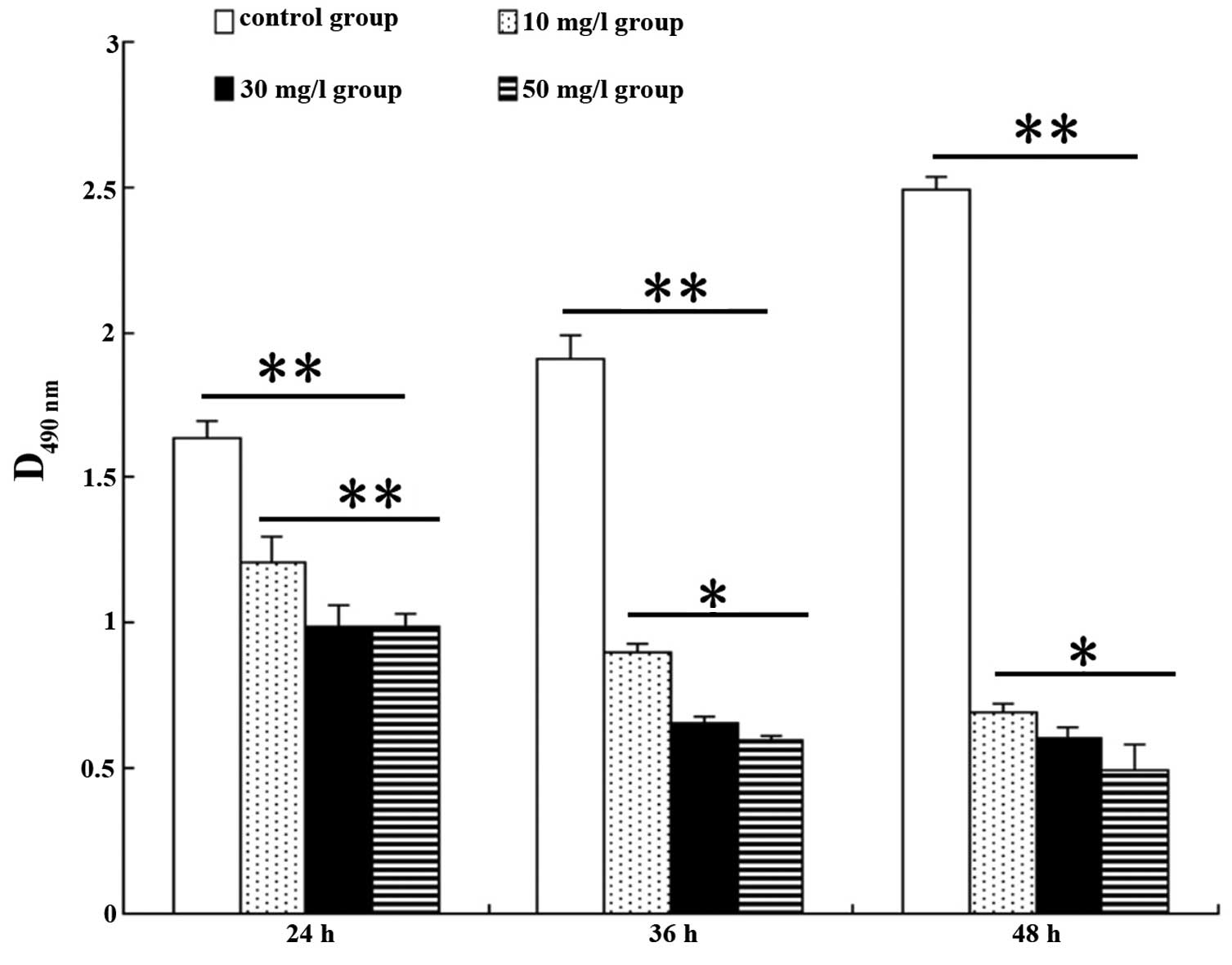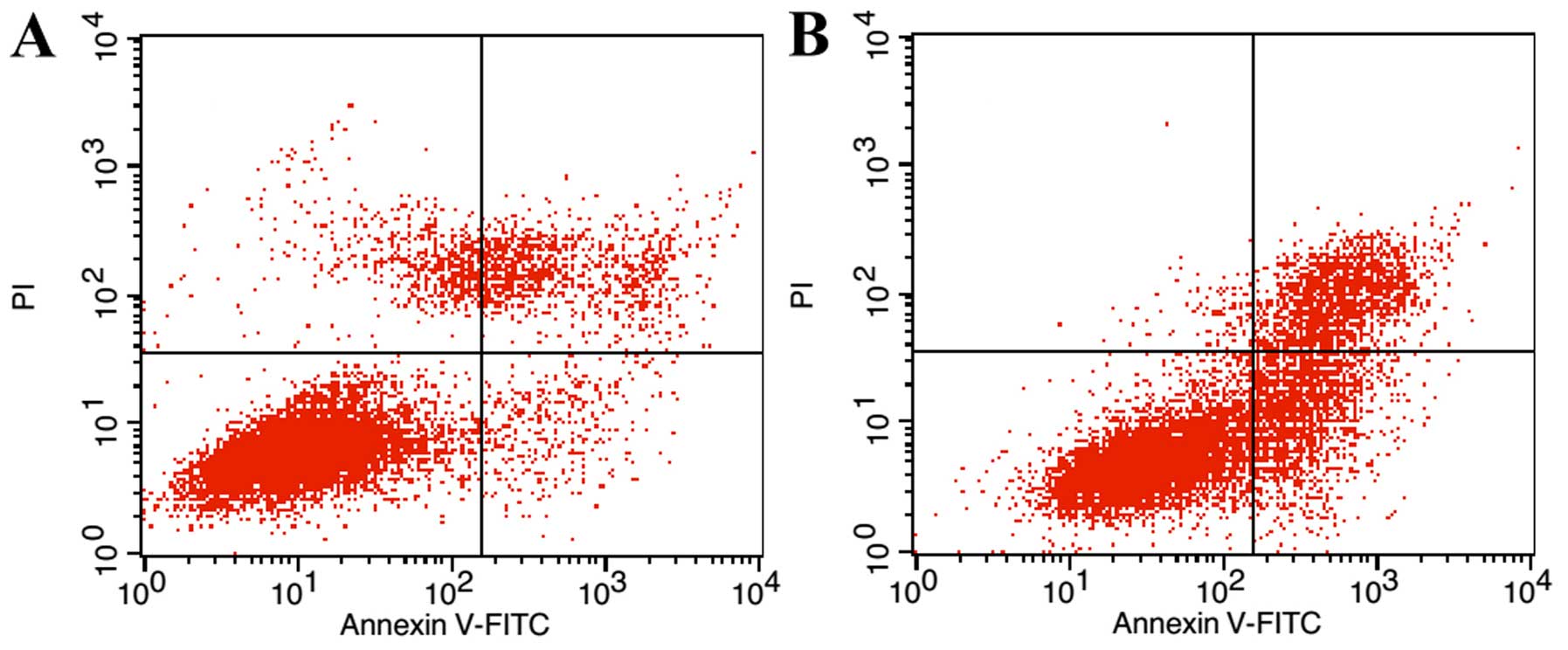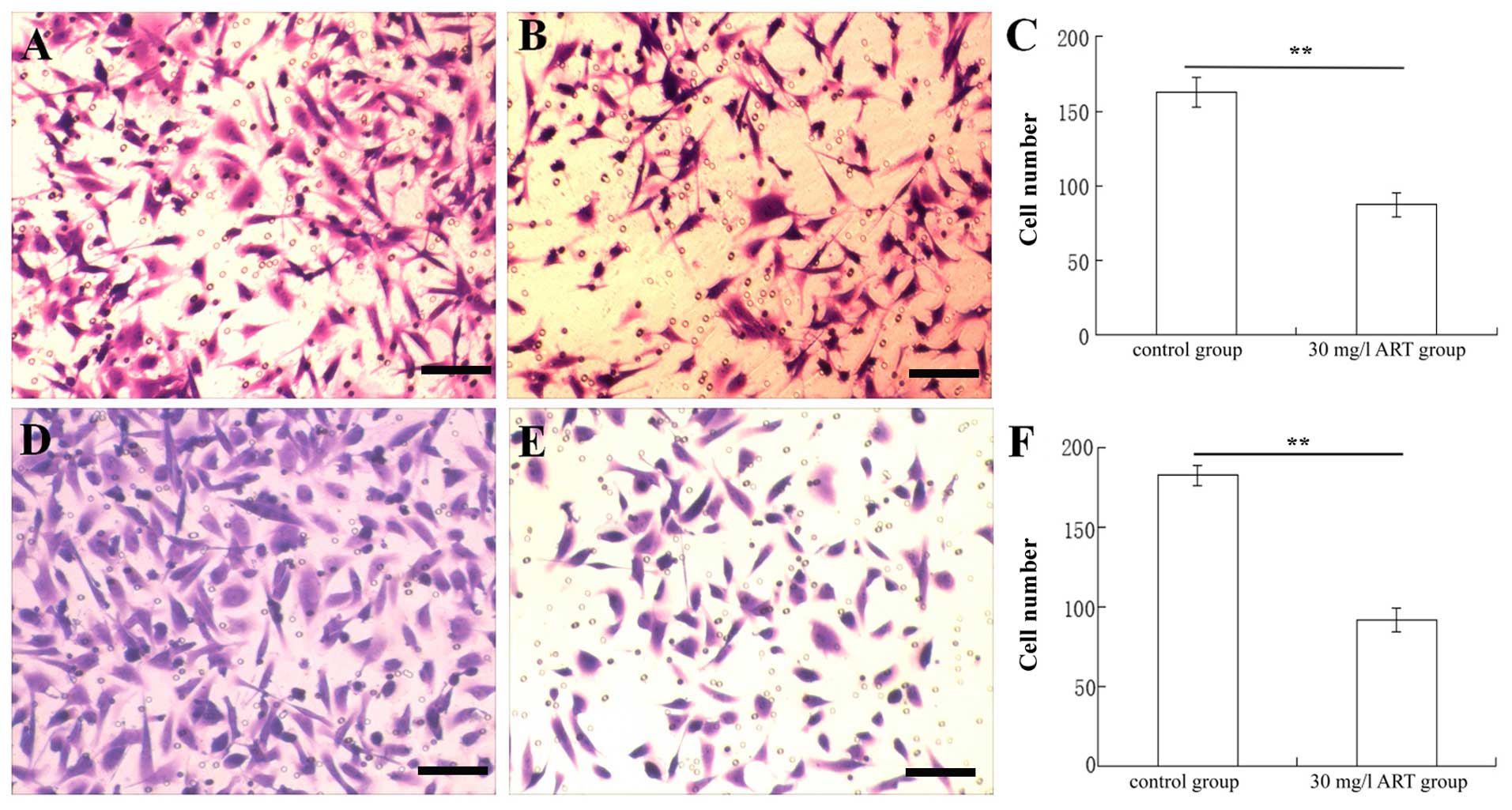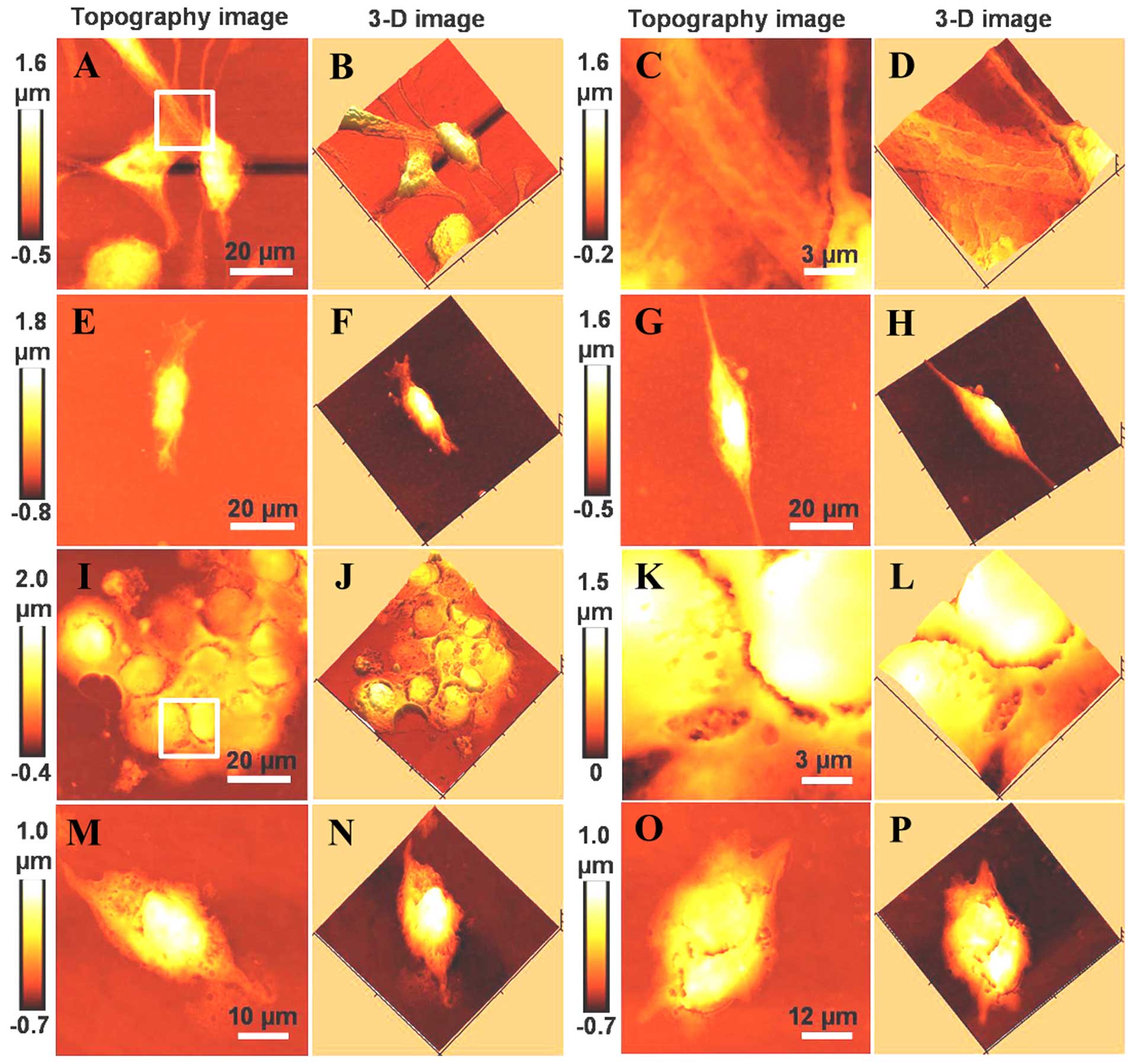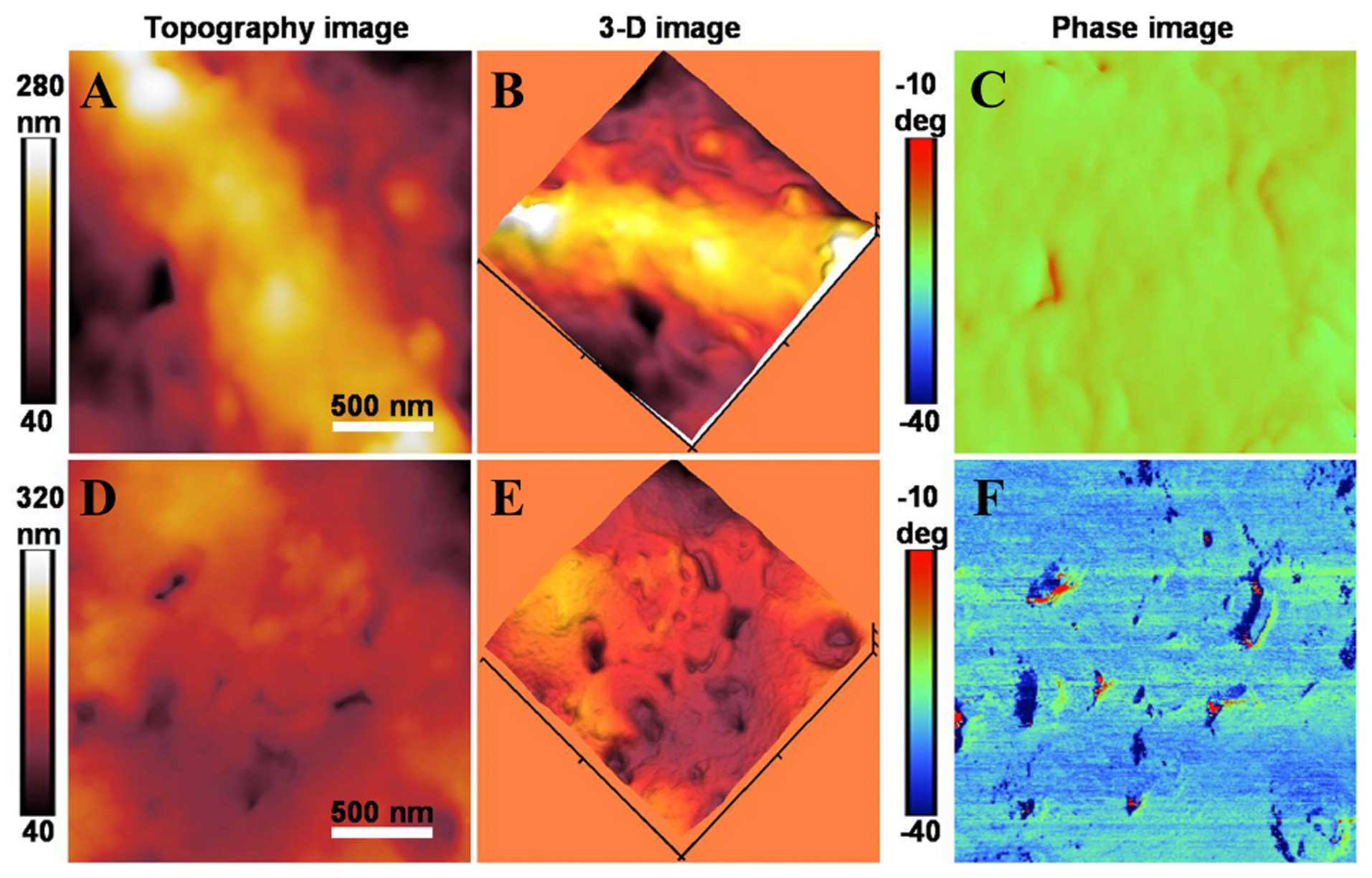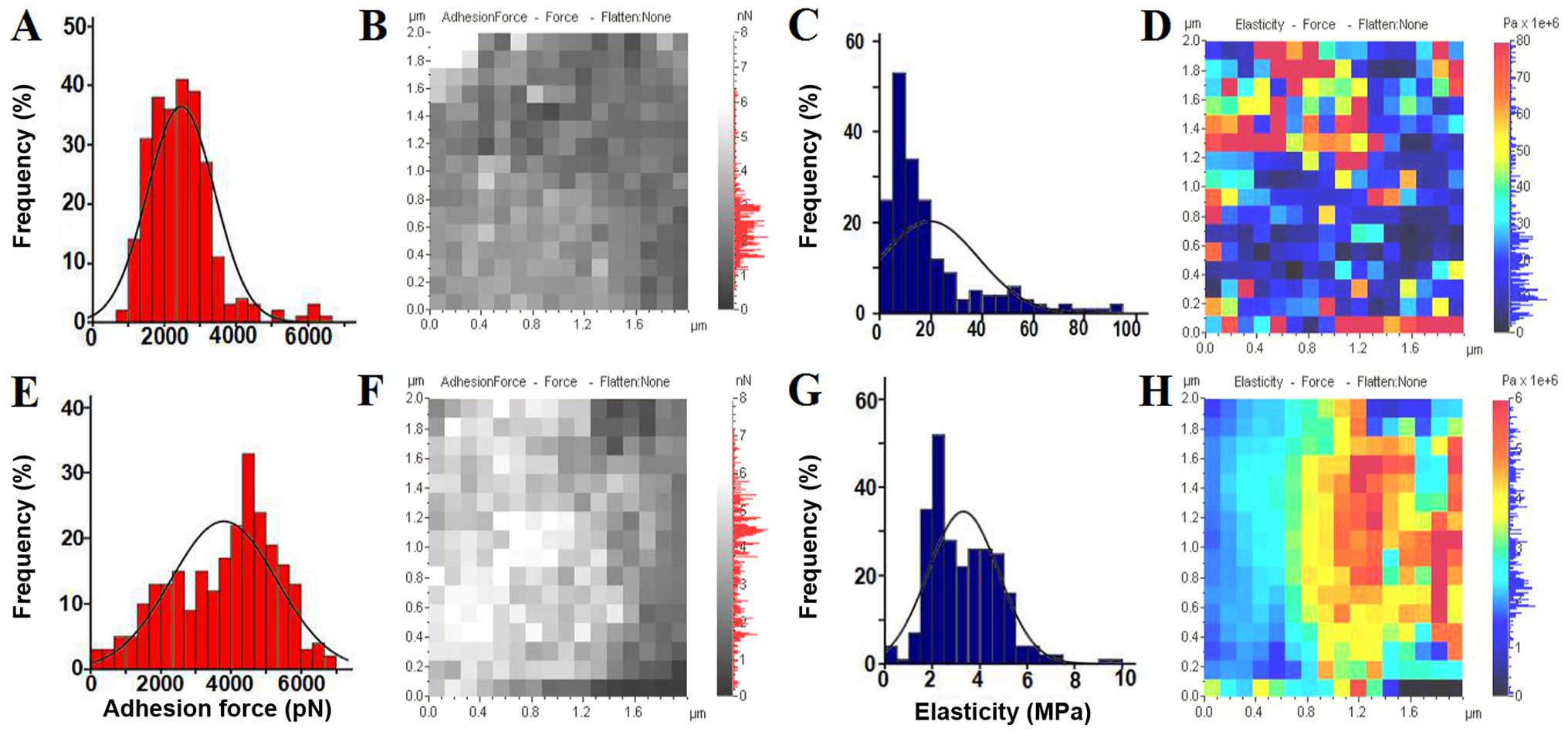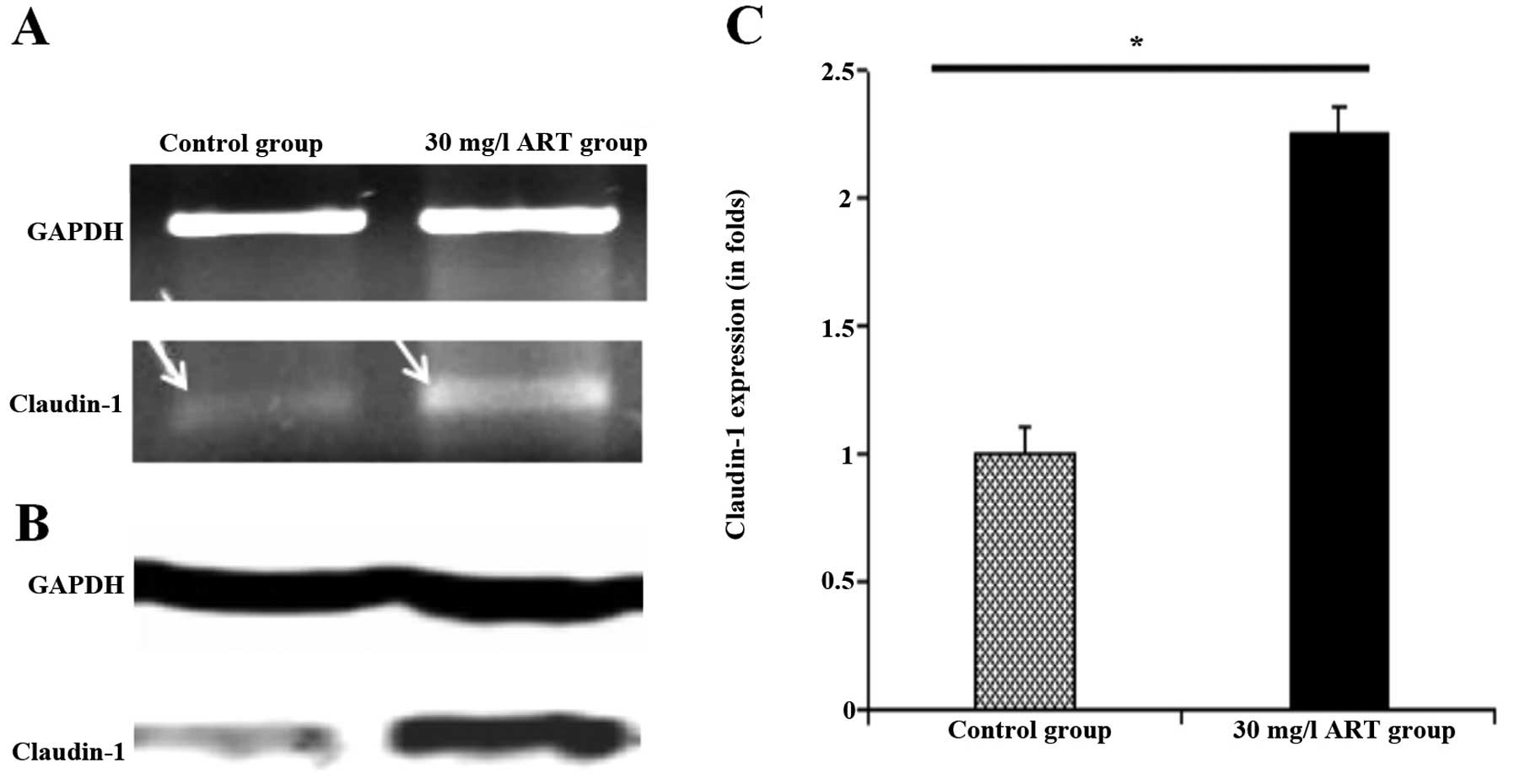|
1
|
Louis DN: Molecular pathology of malignant
gliomas. Annu Rev Pathol. 1:97–117. 2006. View Article : Google Scholar
|
|
2
|
Saika K and Katanoda K: Comparison of time
trends in brain and central nervous system cancer mortality
(1990–2006) between countries based on the WHO mortality database.
Jpn J Clin Oncol. 41:304–305. 2011. View Article : Google Scholar : PubMed/NCBI
|
|
3
|
Sørensen MD, Fosmark S, Hellwege S, Beier
D, Kristensen BW and Beier CP: Chemoresistance and chemotherapy
targeting stem-like cells in malignant glioma. Adv Exp Med Biol.
853:111–138. 2015. View Article : Google Scholar : PubMed/NCBI
|
|
4
|
Katsetos CD, Reginato MJ, Baas PW,
D'Agostino L, Legido A, Tuszyn Ski JA, Dráberová E and Dráber P:
Emerging microtubule targets in glioma therapy. Semin Pediatr
Neurol. 22:49–72. 2015. View Article : Google Scholar : PubMed/NCBI
|
|
5
|
White NJ: Qinghaosu (artemisinin): The
price of success. Science. 320:330–334. 2008. View Article : Google Scholar : PubMed/NCBI
|
|
6
|
Youns M, Efferth T, Reichling J,
Fellenberg K, Bauer A and Hoheisel JD: Gene expression profiling
identifies novel key players involved in the cytotoxic effect of
Artesunate on pancreatic cancer cells. Biochem Pharmacol.
78:273–283. 2009. View Article : Google Scholar : PubMed/NCBI
|
|
7
|
Hou J, Wang D, Zhang R and Wang H:
Experimental therapy of hepatoma with artemisinin and its
derivatives: In vitro and in vivo activity, chemosensitization, and
mechanisms of action. Clin Cancer Res. 14:5519–5530. 2008.
View Article : Google Scholar : PubMed/NCBI
|
|
8
|
Li LN, Zhang HD, Yuan SJ, Yang DX, Wang L
and Sun ZX: Differential sensitivity of colorectal cancer cell
lines to artesunate is associated with expression of beta-catenin
and E-cadherin. Eur J Pharmacol. 588:1–8. 2008. View Article : Google Scholar : PubMed/NCBI
|
|
9
|
Nam W, Tak J, Ryu JK, Jung M, Yook JI, Kim
HJ and Cha IH: Effects of artemisinin and its derivatives on growth
inhibition and apoptosis of oral cancer cells. Head Neck.
29:335–340. 2007. View Article : Google Scholar
|
|
10
|
Liu WM, Gravett AM and Dalgleish AG: The
antimalarial agent artesunate possesses anticancer properties that
can be enhanced by combination strategies. Int J Cancer.
128:1471–1480. 2011. View Article : Google Scholar
|
|
11
|
Rinner B, Siegl V, Pürstner P, Efferth T,
Brem B, Greger H and Pfragner R: Activity of novel plant extracts
against medullary thyroid carcinoma cells. Anticancer Res.
24:495–500. 2004.PubMed/NCBI
|
|
12
|
Efferth T, Dunstan H, Sauerbrey A, Miyachi
H and Chitambar CR: The anti-malarial artesunate is also active
against cancer. Int J Oncol. 18:767–773. 2001.PubMed/NCBI
|
|
13
|
Efferth T, Sauerbrey A, Olbrich A, Gebhart
E, Rauch P, Weber HO, Hengstler JG, Halatsch ME, Volm M, Tew KD, et
al: Molecular modes of action of artesunate in tumor cell lines.
Mol Pharmacol. 64:382–394. 2003. View Article : Google Scholar : PubMed/NCBI
|
|
14
|
Shi R, Cui H, Bi Y, Huang X, Song B, Cheng
C, Zhang L, Liu J, He C, Wang F, et al: Artesunate altered cellular
mechanical properties leading to deregulation of cell proliferation
and migration in esophageal squamous cell carcinoma. Oncol Lett.
9:2249–2255. 2015.PubMed/NCBI
|
|
15
|
Hörber JK and Miles MJ: Scanning probe
evolution in biology. Science. 302:1002–1005. 2003. View Article : Google Scholar : PubMed/NCBI
|
|
16
|
Alonso JL and Goldmann WH: Feeling the
forces: Atomic force microscopy in cell biology. Life Sci.
72:2553–2560. 2003. View Article : Google Scholar : PubMed/NCBI
|
|
17
|
Lesniewska E, Milhiet PE, Giocondi MC and
Le Grimellec C: Atomic force microscope imaging of cells and
membranes. Methods Cell Biol. 68:51–65. 2002. View Article : Google Scholar : PubMed/NCBI
|
|
18
|
Soofi SS, Last JA, Liliensiek SJ, Nealey
PF and Murphy CJ: The elastic modulus of Matrigel as determined by
atomic force microscopy. J Struct Biol. 167:216–219. 2009.
View Article : Google Scholar : PubMed/NCBI
|
|
19
|
Kondra S, Laishram J, Ban J, Migliorini E,
Di Foggia V, Lazzarino M, Torre V and Ruaro ME: Integration of
confocal and atomic force microscopy images. J Neurosci Methods.
177:94–107. 2009. View Article : Google Scholar
|
|
20
|
Wang J, Wan Z, Liu W, Li L, Ren L, Wang X,
Sun P, Ren L, Zhao H, Tu Q, et al: Atomic force microscope study of
tumor cell membranes following treatment with anti-cancer drugs.
Biosens Bioelectron. 25:721–727. 2009. View Article : Google Scholar : PubMed/NCBI
|
|
21
|
D'Souza T, Agarwal R and Morin PJ:
Phosphorylation of claudin-3 at threonine 192 by cAMP-dependent
protein kinase regulates tight junction barrier function in ovarian
cancer cells. J Biol Chem. 280:26233–26240. 2005. View Article : Google Scholar : PubMed/NCBI
|
|
22
|
Karnati HK, Panigrahi M, Shaik NA, Greig
NH, Bagadi SA, Kamal MA and Kapalavayi N: Down regulated expression
of claudin-1 and claudin-5 and up regulation of β-catenin:
Association with human glioma progression. CNS Neurol Disord Drug
Targets. 13:1413–1426. 2014. View Article : Google Scholar
|
|
23
|
Snedecor GW and Cochran WG: Statistical
Methods. 7th edition. Iowa State University Press; Ames, IA, USA:
pp. 32–43. 1980
|
|
24
|
Puech PH, Poole K, Knebel D and Muller DJ:
A new technical approach to quantify cell-cell adhesion forces by
AFM. Ultramicroscopy. 106:637–644. 2006. View Article : Google Scholar : PubMed/NCBI
|
|
25
|
Geiger B, Bershadsky A, Pankov R and
Yamada KM: Transmembrane crosstalk between the extracellular matrix
- cytoskeleton crosstalk. Nat Rev Mol Cell Biol. 2:793–805. 2001.
View Article : Google Scholar : PubMed/NCBI
|
|
26
|
Sato K, Adachi T, Ueda D, Hojo M and
Tomita Y: Measurement of local strain on cell membrane at
initiation point of calcium signaling response to applied
mechanical stimulus in osteoblastic cells. J Biomech. 40:1246–1255.
2007. View Article : Google Scholar
|
|
27
|
Voïtchovsky K, Antoranz Contera S,
Kamihira M, Watts A and Ryan JF: Differential stiffness and lipid
mobility in the leaflets of purple membranes. Biophys J.
90:2075–2085. 2006. View Article : Google Scholar : PubMed/NCBI
|
|
28
|
Fuchs E and Cleveland DW: A structural
scaffolding of intermediate filaments in health and disease.
Science. 279:514–519. 1998. View Article : Google Scholar : PubMed/NCBI
|
|
29
|
Saunders WS, Shuster M, Huang X, Gharaibeh
B, Enyenihi AH, Petersen I and Gollin SM: Chromosomal instability
and cytoskeletal defects in oral cancer cells. Proc Natl Acad Sci
USA. 97:303–308. 2000. View Article : Google Scholar : PubMed/NCBI
|
|
30
|
Mahoney JA and Rosen A: Apoptosis and
autoimmunity. Curr Opin Immunol. 17:583–588. 2005. View Article : Google Scholar : PubMed/NCBI
|
|
31
|
Gourlay CW and Ayscough KR: A role for
actin in aging and apoptosis. Biochem Soc Trans. 33:1260–1264.
2005. View Article : Google Scholar : PubMed/NCBI
|
|
32
|
Hadj-Rabia S, Baala L, Vabres P,
Hamel-Teillac D, Jacquemin E, Fabre M, Lyonnet S, De Prost Y,
Munnich A, Hadchouel M, et al: Claudin-1 gene mutations in neonatal
sclerosing cholangitis associated with ichthyosis: A tight junction
disease. Gastroenterology. 127:1386–1390. 2004. View Article : Google Scholar : PubMed/NCBI
|
|
33
|
Lee JW, Hsiao WT, Chen HY, Hsu LP, Chen
PR, Lin MD, Chiu SJ, Shih WL and Hsu YC: Upregulated claudin-1
expression confers resistance to cell death of nasopharyngeal
carcinoma cells. Int J Cancer. 126:1353–1366. 2010.
|
|
34
|
Blanchard AA, Ma X, Dueck KJ, Penner C,
Cooper SC, Mulhall D, Murphy LC, Leygue E and Myal Y: Claudin 1
expression in basal-like breast cancer is related to patient age.
BMC Cancer. 13:2682013. View Article : Google Scholar : PubMed/NCBI
|
|
35
|
Kumar S and Weaver VM: Mechanics,
malignancy, and metastasis: The force journey of a tumor cell.
Cancer Metastasis Rev. 28:113–127. 2009. View Article : Google Scholar : PubMed/NCBI
|
|
36
|
Fletcher DA and Mullins RD: Cell mechanics
and the cytoskeleton. Nature. 463:485–492. 2010. View Article : Google Scholar : PubMed/NCBI
|



